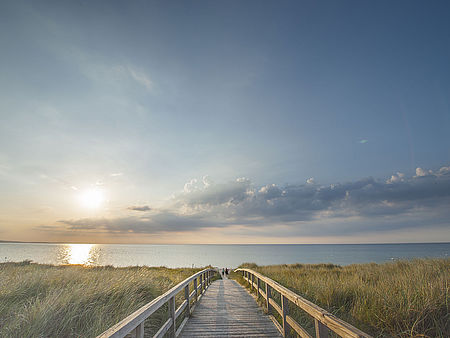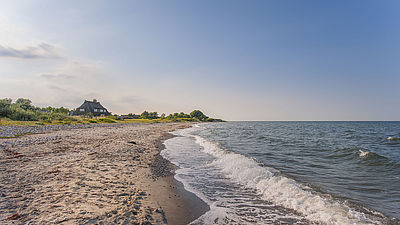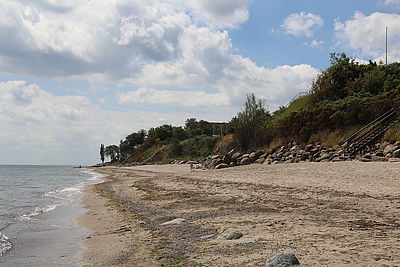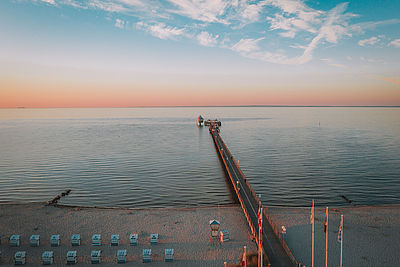
Landscape at the Baltic Sea
When you get off the train in Schleswig-Holstein, you can breathe a sigh of relief. The air is fresh and usually slightly cool, there is always a gentle breeze that clears the mind and releases hidden energies.
The Baltic Sea is more sea than ocean. The tides are only noticeable at its geographically westernmost point, in the Flensburg Inner Fjord, and the salinity of the water is low. It also depends on the proximity of the Atlantic Ocean, and it decreases towards the east. The water temperature is a pleasant 18 to 20 degrees in the summer months and remains largely constant. The climate is mild and the landscape varied: In the far north, between Geltinger Birk and the Schlei region, the coastline is gently curving and lush green. The shores are reedy, while beaches and towns mostly quiet.

When the woods and meadows along the coast suddenly stop, the first cliffs between Eckernförde and Kiel come into view, inviting you to hike in the midst of nature on summer and winter days. If you take the trail high up, you’ll enjoy a fantastic view over the Baltic Sea. Down by the water, between large and small rocks, you can find shells, driftwood, and with a bit of luck even amber or so-called “Hühnergötter” – stones that have a hole in the middle.

On the flat beaches between Kiel and Lübeck, sea bridges have a long tradition: imposing structures on stilts, mostly made of wood, which pave a way across the water. The proud pier in Grömitz, for example, is Schleswig-Holstein’s longest pier at almost 400 metres. To this day, it serves as a landing place for shipping traffic. And, by the way, you can be as close as possible to the Baltic Sea on dry feet.
